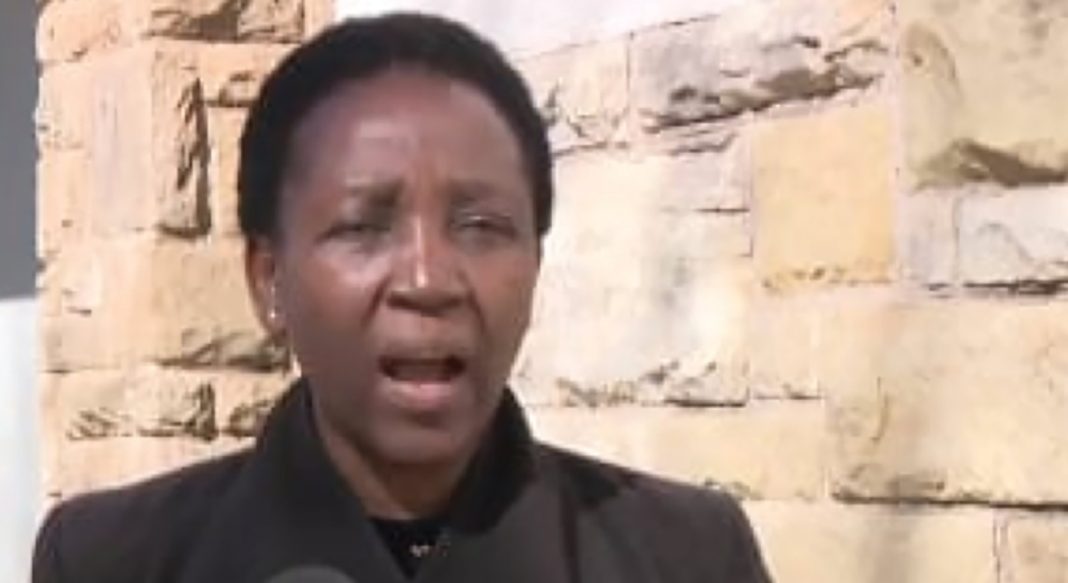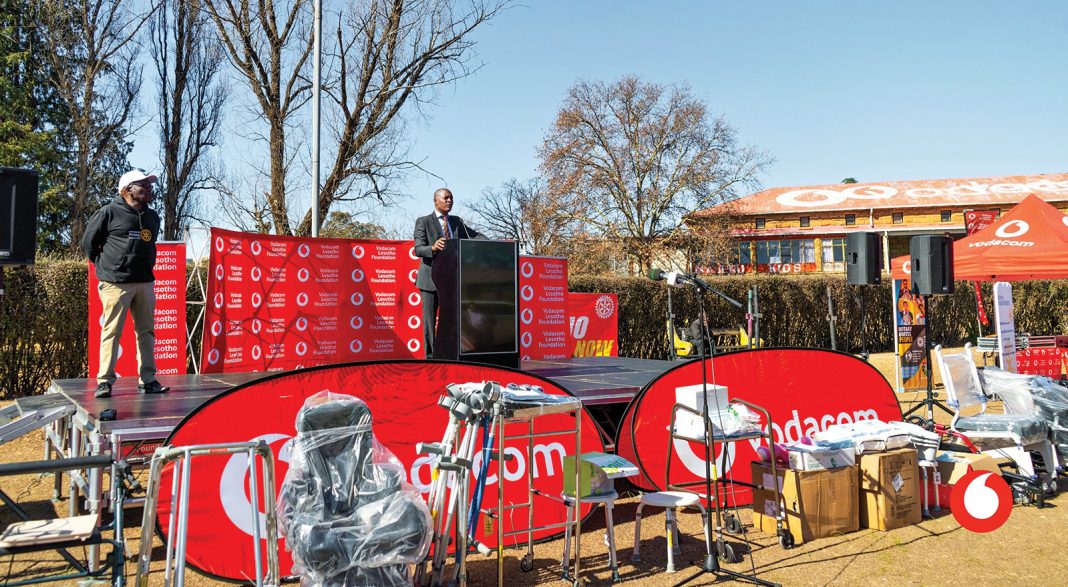The Disaster Management Authority (DMA) and the World Food Programme (WFP) have launched Phase II of the Regional Urban Preparedness (RUP II) Project in a joint effort to enhance disaster preparedness in urban areas.
The project aims to build resilience and prepare for disasters in order to response effectively and efficiently particularly in urban settlements. It is a fact that climate change and rapid urbanisation pose increasing risks to urban populations worldwide.
In an exclusive interview with theReporter’s ‘Mantšali Phakoana, Mafeteng district disaster management manager, ‘Mamonyaku Koloti unpacks the project and reveals lessons learned in Phase I.
Kindly give us a brief overview of the RUP II project that has been launched recently.
As Lesotho continues to navigate the complexities of natural disasters and economic instability, initiatives like the RUP II project are essential in safeguarding the wellbeing of urban populations. The project is about shaping and enhancing preparedness and response efforts in such areas.
The project serves as a roadmap for enhancing disaster preparedness in Lesotho’s urban areas, ensuring that the nation is better equipped to handle future challenges. The RUP II project commenced in January and is expected to end in December 2025. Phase II aims to build on this momentum by expanding the reach and scope of the initiative. It is a continuation of Phase 1 which had started in 2021 and ended in 2023.
Briefly take us through the successes achieved in Phase I of the project.
Phase 1 was indeed very successful hence extension to Phase 2. The former phase laid a solid foundation by analysing urban context, identification of hot spots and vulnerability level within urban areas including development of 3 Standard operating procedures for Coordination, Vulnerability Framework and Cash and Voucher Assistance. A key aspect of this success was the invaluable contribution of women in Botha-Bothe district, particularly the group known as ‘Bo Mme ba Baitšokoli.’
These women played a crucial role in reaching out to, and supporting vulnerable people, ensuring that the initiatives were inclusive and effective.
The initiative made by ‘Bo Mme ba Baitšokoli’ underscored the importance of women’s leadership in community resilience efforts. Their grassroots approach not only provided immediate assistance, but it also empowered other women to take active roles in their communities.
The success of ‘Bo Mme ba Baitšokoli’ in Phase I demonstrated the impact of women’s participation in community resilience efforts. Their collaborative efforts with the DMA represent a promising step towards a more resilient and prepared Lesotho. This empowerment is the cornerstone of Phase II.
What form of assistance is Phase II of the project designed to provide?
Among the recommendations from phase 1 of the project is establishment of the National Cash and Voucher working group, which is going to assist by giving guidance to humanitarian actors and partners who would be responding through cash transfers.
How will this programme help ensure that urban areas are better prepared for disasters?
With urban areas prone to natural disasters such as floods and droughts, Phase II will focus on strengthening early warning systems and disaster response strategies. This will involve training community members in disaster preparedness and response. The livelihoods of Basotho will be improved and they will be able to take early actions before disasters strike.
As economic instability poses a significant threat to urban communities, Phase II will support small businesses and informal sector workers, many of whom are women. That would be achieved by providing training, resources, and financial support. The initiative seeks to create more resilient local economies.
Women will continue to play a pivotal role in Phase II, with a focus on expanding their involvement and leadership. The project aims to replicate this success across other urban areas in Lesotho.
Building on the community-focused approach of Phase I, Phase II will continue to involve local residents in planning and decision-making processes. This ensures that initiatives are tailored to the specific needs and priorities of each community.
Who are the stakeholders involved in the planning and implementation of this project?
The RUP II project is implemented by the World Food Programme in partnership with the Disaster Management Authority (DMA), the Lesotho Vulnerability Assessment Committee (LVAC) and the Ministry of Social Development. It is funded by the European Civil Protection and Humanitarian Aid Operations (ECHO). These partners are working together to strengthen resilience and minimise the impacts of disasters.
How the DMA and WFP will monitor the effectiveness of the urban preparedness project?
Engagement with city-based civil society organisations and community members has been facilitated for each phase of the project —embracing the critical importance for vulnerable groups such as women, children and youth, older persons, migrants, ethnic minorities, and persons with disabilities to be actively involved in resilience building and disaster preparedness at all levels. This is aimed at ensuring and that their needs and aspirations are taken into consideration.
Urban areas, with their dense populations and essential infrastructure, are particularly susceptible to threats. The areas are the heart of our nation’s economic and social activities. Ensuring their resilience against disasters is paramount for the safety and prosperity of our people.
The Phase II of the project will build on the successes of the initial phase, enhancing our preparedness and response strategies to better protect our urban and vulnerable communities.
Are there specific cities or urban areas that are considered more at risk of disasters and will therefore be prioritised by the project?
The project focuses on all urban populations. The outputs of this project would then be used as benchmarks in the rural areas. The piloting districts were chosen based on complexity and the dynamics of larger towns that are classified as cities.
The goal is to build a common understanding amongst stakeholders on the specific characteristics of urban vulnerability and essential needs, and strengthen country capacity by providing partners, local governments, and national institutions with a set of tools to better prepared for responding to shocks in urban areas, Assessments were carried out in the towns of Botha-Bothe, Hlotse, Maputsoe, Mafeteng, and Maseru — the latter being the main contributor to Lesotho’s urban growth.
What are some of the challenges learned and how are partners aiming to address them in developing disaster preparedness plans?
Some of the challenges learned are that stakeholders did not understand their roles in disaster risk management. There are several initiatives being done by different players but are not well coordinated (entities are working in silos).
What steps will the DMA and WFP take to ensure that the Urban Preparedness Project is sustainable in the long-term?
The success of Phase II hinges on collaboration between various stakeholders, including government agencies, non-governmental organisations, community leaders, and international partners. By working together, these groups can ensure that the initiative’s goals are met and that women are empowered to lead their communities towards resilience. Strengthening coordination and participations with private sector will also help the project’s sustainability.
With the growing threat of climate change exacerbating the frequency and intensity of natural disasters, cities and urban areas are at greater risk than ever before. How does the Urban Preparedness Project seek to address these challenges?
It is common knowledge that our country is especially vulnerable to storms, droughts and floods. We can’t talk about disaster without climate conditions. With the stakeholder’s commitment, the project will support the country in mitigating the impacts, building resilient urban environments. This project is a testament of our shared goal of reducing the vulnerability of urban population to disasters.









